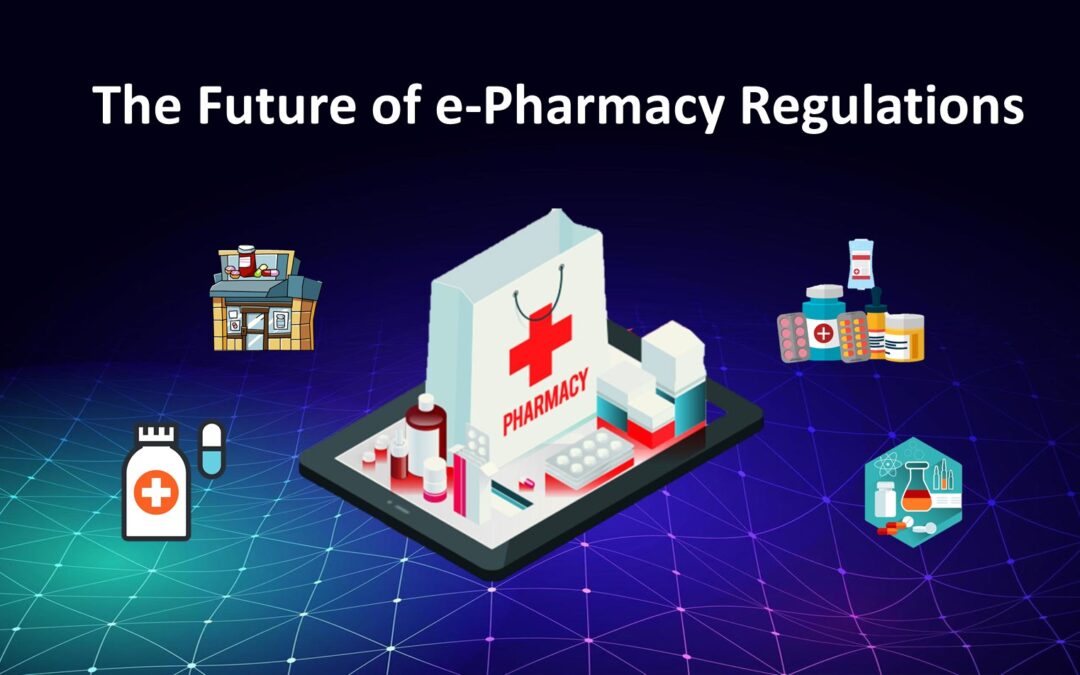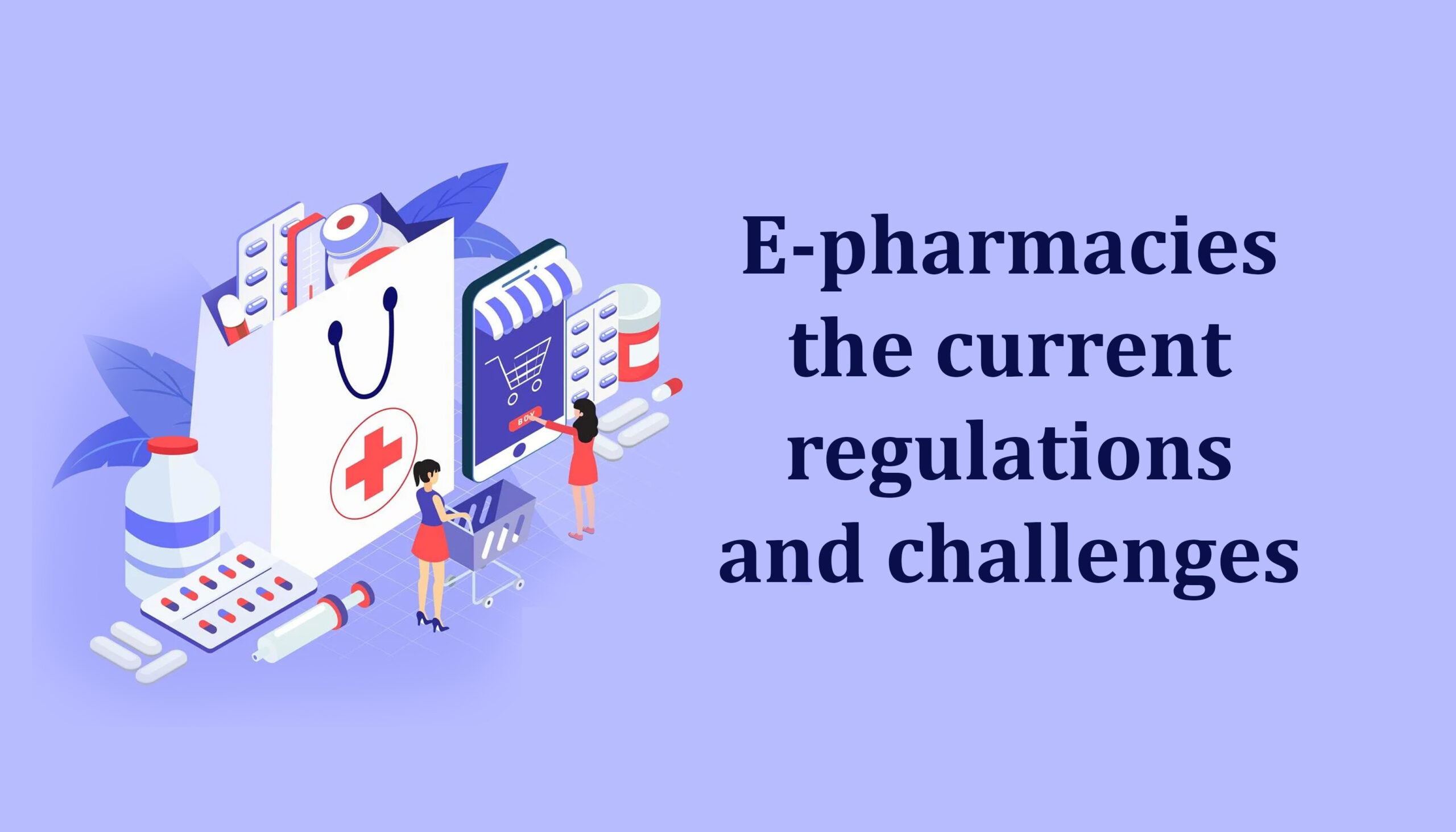In the previous blog we had discussed the various models in which e-pharmacies operate, the current laws governing them and the problem areas. You can read the previous blog here. In our attempt to gain clarity on the regulatory regime around e-pharmacies we will be focusing on the future of e-pharmacy regulations in this blog.
The Draft E-pharmacy rules is by far the most significant attempt made to regulate the e-pharmacy sector. The rules were published by the Department of Health and Family Welfare on 28th of August 2018. The risks of illegal online pharmacies, use of forged prescriptions, leakage of sensitive personal information, etc. needed to be addressed on an immediate basis. The draft rules define many concepts which came up with the advent of E-pharmacies. Let us take a look at the new rules and the impact it might have.
Draft E-Pharmacy Rules
The Draft E-pharmacy Rules have been in the pipeline since a long time now. It brings about some clarity by setting down a few set guidelines as under:
-
As per the Draft Rules, registration is mandatory for any person who wishes to run an E-pharmacy. This registration is valid for 3 years and can be renewed.
-
On receipt of a prescription, the registered pharmacist on behalf of the E-pharmacy is required to verify the details of the patient and registered medical practitioner and arrange for dispensing of the drugs. The e-pharmacy is required to dispense and decide for supply of drugs from any licensed premises under the DCA. Further, the details of the drugs dispensed, and the patient details must be maintained properly for production whenever required.
-
E-pharmacies cannot advertise any drug on radio or television or internet or print or any other media for any purpose.
-
The premises from where the E-pharmacy business is conducted shall be inspected every 2 years by the Central or State Licensing Authority. Further, the Licensing Authority is required to monitor whether data and information regarding the drugs availability, types of drugs offered for sale, supply channels or vendor lists, details of registered pharmacists, registered medical practitioner, are being maintained by the registration holder.
The Challenges which still Remain
The Draft Pharmacy Rules though have provided some clarity a few challenges still remain which cannot be overlooked. They are:
-
The Draft Rules have failed to address the concerns of validity of prescriptions, misuse of prescriptions, dispensing of prescription drugs and self-medication. The mechanism to verify the prescription is nowhere mentioned. E-pharmacies operate on various modes when verifying prescription, but these various modes are not addressed in the Rules. The customer who is ordering drugs using a fake prescription should be made liable as well. Procedure to verify patient details and prescription is also not specified in the Rules.
-
Operation of illegal pharmacies, storage, and transport of drugs also remains a big challenge. The draft rules do not speak about a mechanism to curb illegal e-pharmacies. A dedicated wing to address illegal pharmacies is essential. The liability and penalty attached to illegal pharmacies should be clearly defined.
-
Guidelines relating to stored data is not specified. Though it is mentioned that the information received from a customer shall be treated as sensitive information it does not mention on what grounds the same data can be stored or shared with the government. The display of privacy policy by the e-pharmacy on the website or application is not mandated.
-
The impact of the draft rule on the different business models not specified. The working of the various business models varies at a huge scale, so it won’t be a one size fits all kind of a system. The draft rules however make no distinction between the different models.
A Way Forward
The coming into force of the Draft Rules is the need of the hour. The guidelines would have been more robust if the following things were also kept in mind:
-
Each business model of e-pharmacy to be defined and dealt with separately.
-
Procedure to identify the illegal pharmacies.
-
Procedure for verification of information and e-prescription should be more specific.
-
A definition of e-prescription should be included to remove ambiguity.
-
Proper procedure for storage and inspection of data to be laid out.
Conclusion
E-pharmacies have for sure made medicines more accessible to people. It has helped and aided in making the process of handing over of prescriptions, paying and then finally procuring medicines a lot easier yet it leaves a lot of room for doubt and the quality of medicines delivered can get compromised as well. All said and done, as the growing need of e-pharmacies are giving rise to a ripe market more players are willing to invest in it. In order to make the most of the growth opportunities in the sector one has to definitely bring the Rules into effect first and then go ahead in making further developments to it. It is a hope and a vision to see a robust regulatory regime which will not only protect the companies but also the customers.
In the meantime, if you have any query regarding the regulations or compliances applicable to your sector, get in touch with us or view our Compliance Management Solution.
Written by: Amala Halder
Disclaimer
All material included in this blog is for informational purposes only and does not purport to be or constitute legal or other advice. This blog should not be used as a substitute for specific legal advice. Professional legal advice should be obtained before taking or refraining from an action as a result of the contents of this blog. We exclude any liability (including without limitation that for negligence or for any damages of any kind) for the content of this blog. The views and opinions expressed in this blog are those of the author/(s) alone and do not necessarily reflect the official position of Lexplosion Solutions. We make no representations, warranties or undertakings about any of the information, content or materials provided in this blog (including, without limitation, any as to quality, accuracy, completeness or reliability). All the contents of this blog, including the design, text, graphics, their selection and arrangement are the intellectual property of Lexplosion Solutions Private Limited and/or its licensors.
ALL RIGHTS RESERVED, and all moral rights are asserted and reserved.





